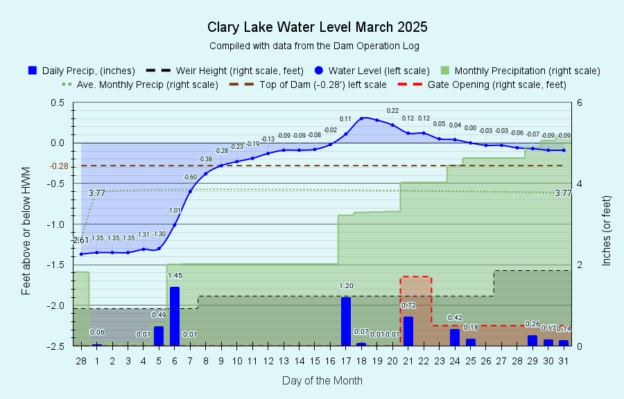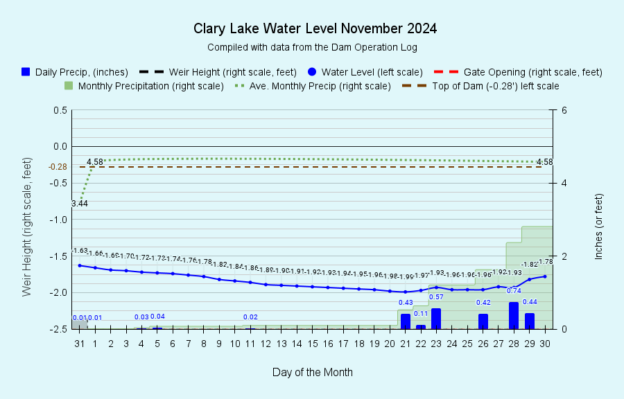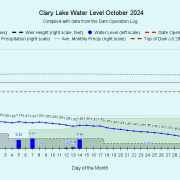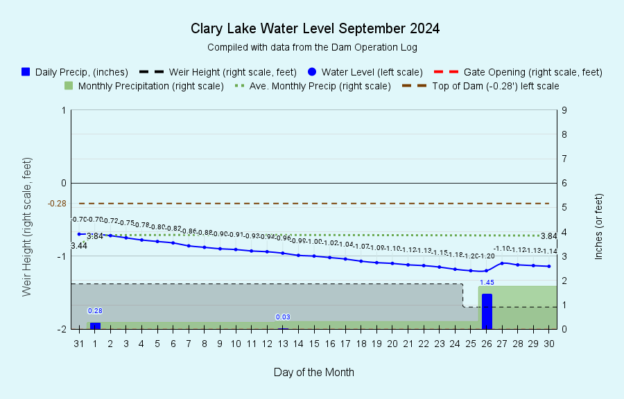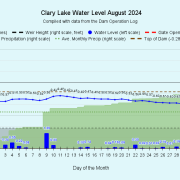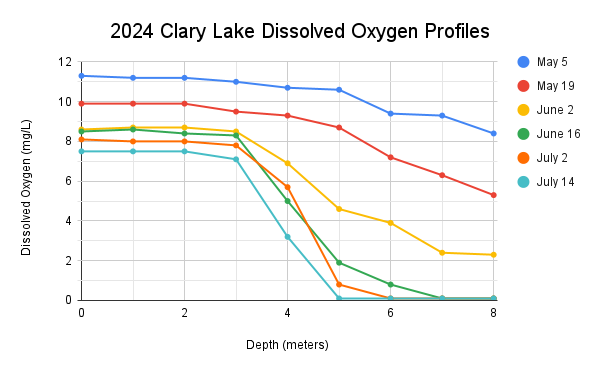 I have archived the May 2025 water level chart (above, and at left). For the third month in a row we’ve received over 5 inches of rain with May having received just shy of 6 inches, making this one very wet spring! In fact, it has rained every weekend for the past 3 months! As of the end of May we’ve received a total of 19.84 inches of precipitation or 2.69 inches more than average for this date, and even more impressive statistic given precipitation in January and February were well below average.
I have archived the May 2025 water level chart (above, and at left). For the third month in a row we’ve received over 5 inches of rain with May having received just shy of 6 inches, making this one very wet spring! In fact, it has rained every weekend for the past 3 months! As of the end of May we’ve received a total of 19.84 inches of precipitation or 2.69 inches more than average for this date, and even more impressive statistic given precipitation in January and February were well below average.
 With all this rain you’d expect the lake level to have remained high, and you’d be right: the lake has been gently overtopping the dam all month. Also with all this rain you might expect some sediment-polluted runoff to have entered the lake resulting in moderate early season algae growth, and you’d be right again. Sure enough, Kelsie French and I started our Water Quality Monitoring for 2025 on Sunday, May 18th and the water was distinctly murky. We obtained a secchi disk reading of only 3.19 meters indicating some early season algae growth. As blooms go, 3 meters is really pretty mild (the State doesn’t consider your lake is blooming until transparency drops below 2 meters) and usually blooms this early in the season are short-lived. The algae quickly consumes the available nutrients and then dies off. In deed, only nine days
With all this rain you’d expect the lake level to have remained high, and you’d be right: the lake has been gently overtopping the dam all month. Also with all this rain you might expect some sediment-polluted runoff to have entered the lake resulting in moderate early season algae growth, and you’d be right again. Sure enough, Kelsie French and I started our Water Quality Monitoring for 2025 on Sunday, May 18th and the water was distinctly murky. We obtained a secchi disk reading of only 3.19 meters indicating some early season algae growth. As blooms go, 3 meters is really pretty mild (the State doesn’t consider your lake is blooming until transparency drops below 2 meters) and usually blooms this early in the season are short-lived. The algae quickly consumes the available nutrients and then dies off. In deed, only nine days  later I spotted the telltale green scum on the lake surface, evidence of the cyanobacteria die off (picture above). On our second trip out to the deep hole on Friday May 30th, our secchi disk reading was 3.87 meters indicating the water was already clearing up. You can see where these first 2 secchi disk readings fall on the chart at left.
later I spotted the telltale green scum on the lake surface, evidence of the cyanobacteria die off (picture above). On our second trip out to the deep hole on Friday May 30th, our secchi disk reading was 3.87 meters indicating the water was already clearing up. You can see where these first 2 secchi disk readings fall on the chart at left.
Assuming runoff slows down as the summer progresses, we can look forward to improving transparency later this summer.




